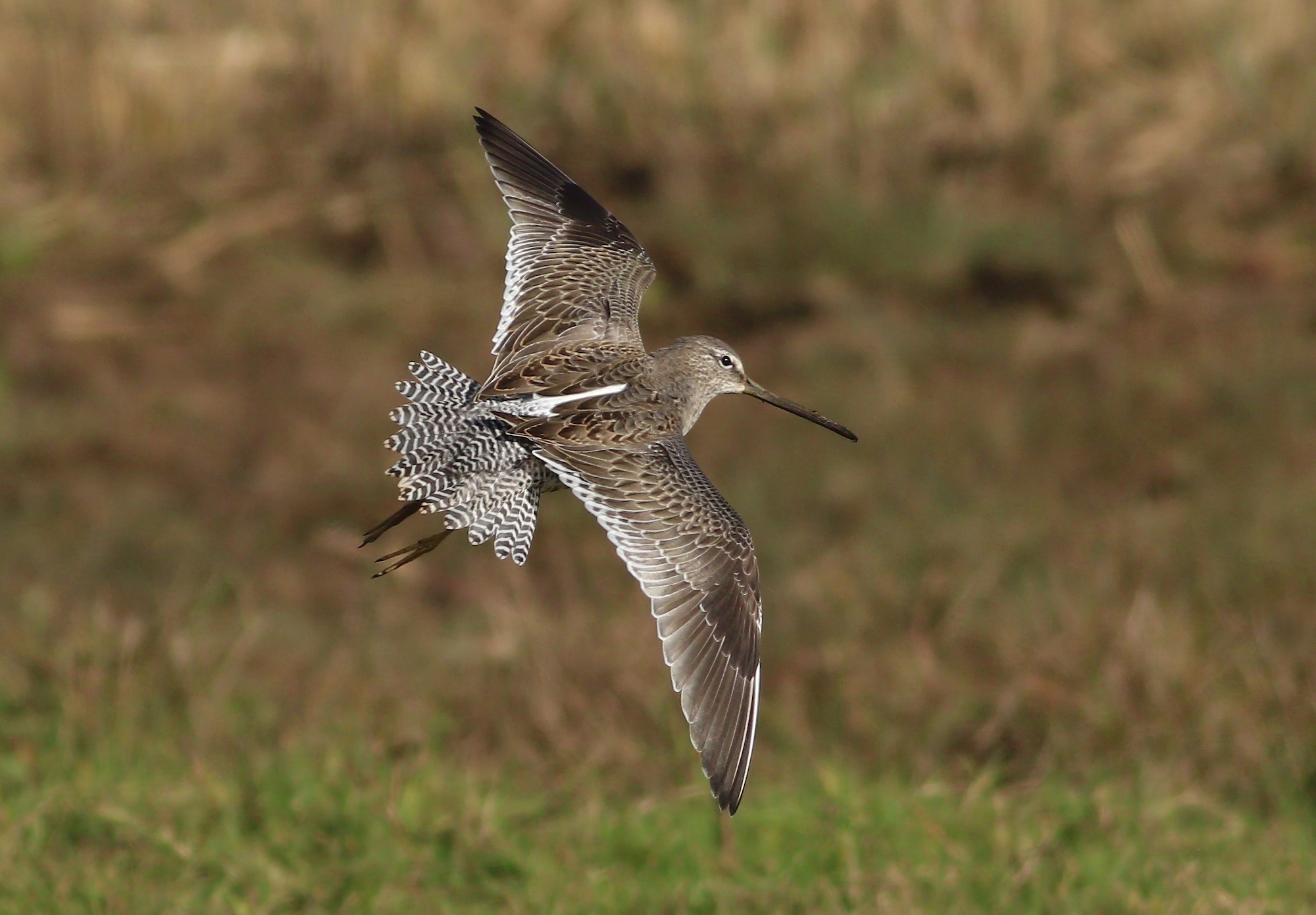Long-billed Dowitcher Limnodromus scolopaceus
Rare. North America, north-eastern Russia.
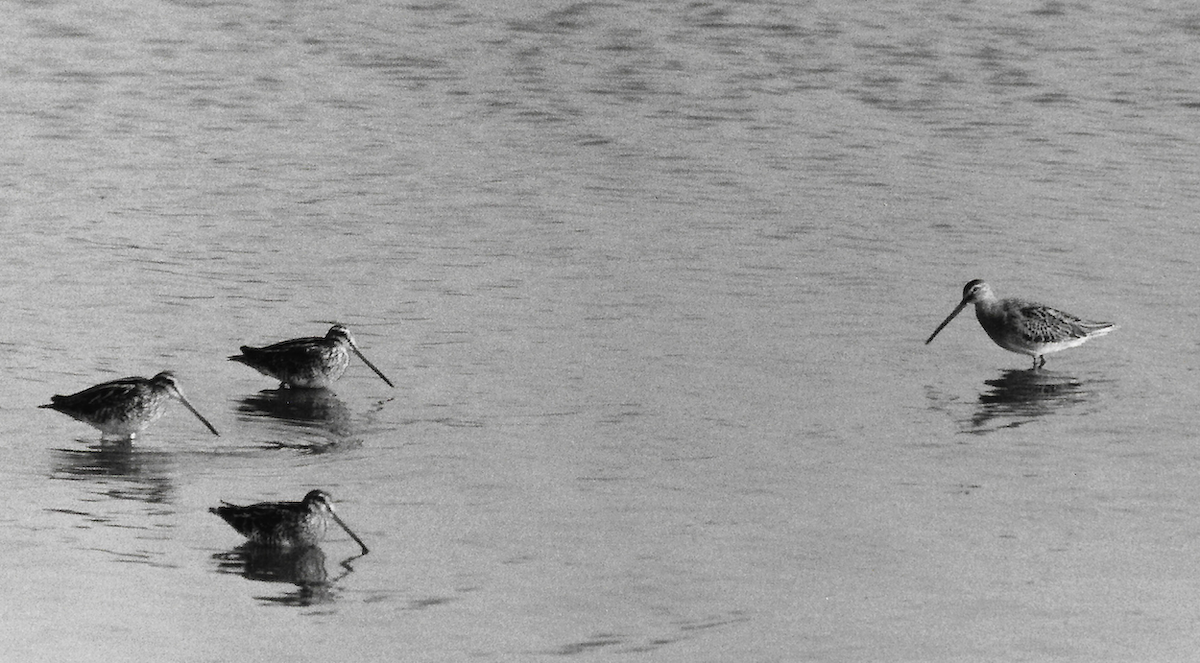
Above, the county's second record of Long-billed Dowitcher (right) with three Common Snipe, September 28th 1971,
Bardney sugar beet ponds (Keith Atkin).
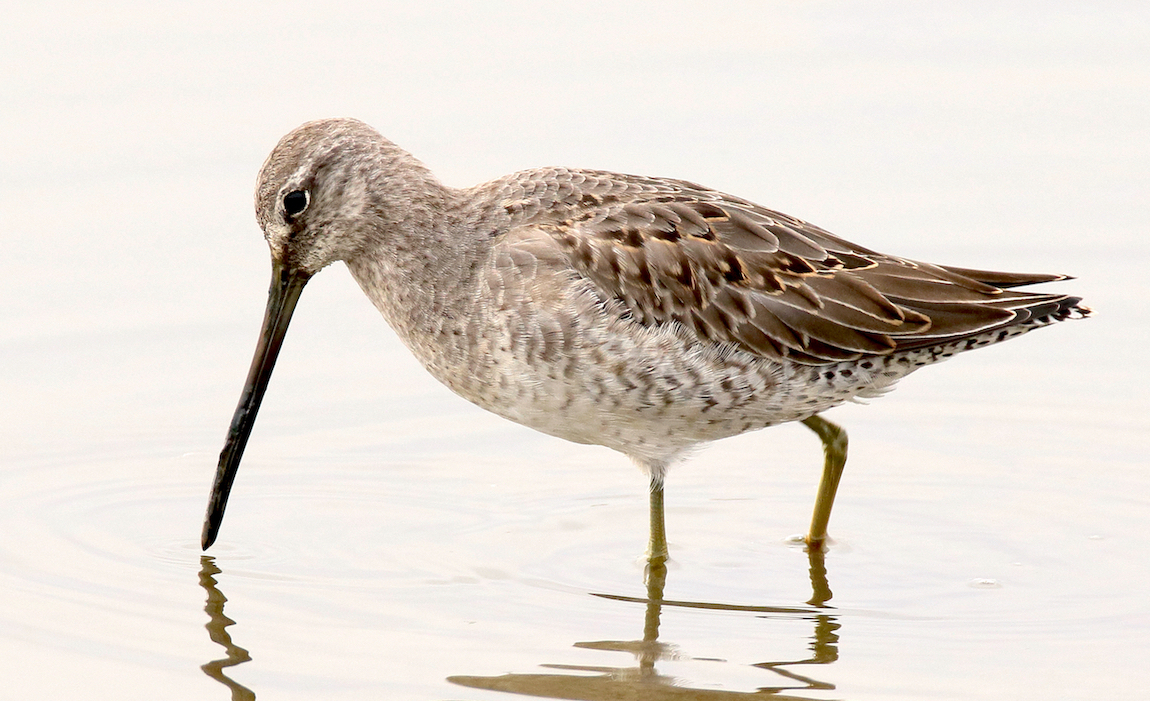
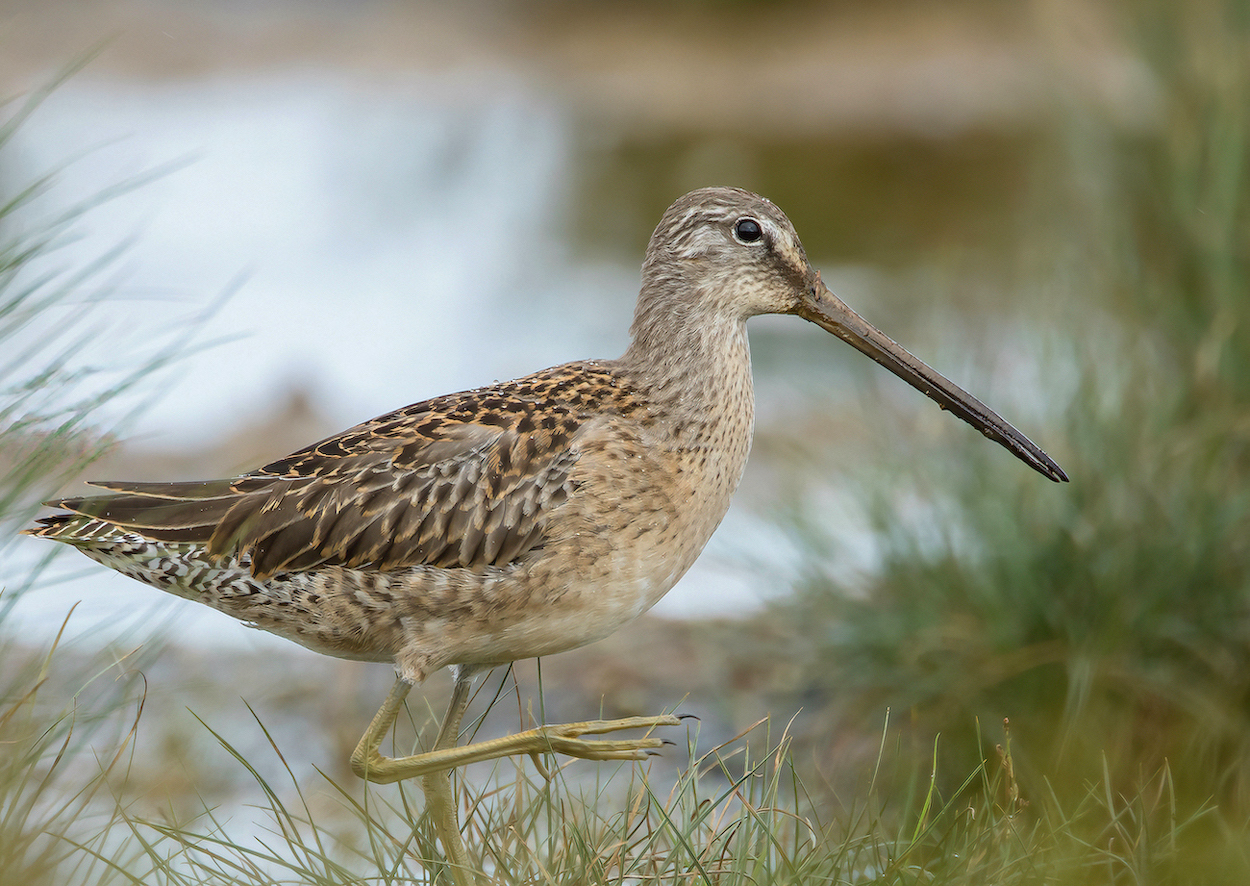
Long-billed Dowitchers: left, Frampton Marsh October 23rd (Russ Hayes) and centre, October 29th 2016 (Neil Smith);
right, Saltfleet Haven September 16th 2017 (Mark Johnson).
A Dowitcher sp. was shot in 1882, most likely Long-billed, although not specifically identified and not included here. The first county record follows L&A and was found at Wisbech Sewage Farm in Sep 1963 and accepted as either a Long-billed or Short-billed Dowitcher, L. griseus. This record was reviewed much later and confirmed as a Long-billed Dowitcher by the BBRC (Rogers et al 1980). Two more followed in 1971 and 1986 before regular appearances began in the 2000s brought the total to 12. Of the 10 birds which were aged from 2002-2019, six were 1CY birds turning up in the autumn. Might some of these be coming from north-eastern Russia rather than north America? Arrival dates have all been in late summer or autumn (see chart) but most birds have made stays of at least a week and, in some cases, several months.
L. scolopaceus and L. griseus were formerly considered conspecific but a thorough review of British Dowitcher museum specimens and sight records by Nisbet (1961) established the acceptable historic records. Since then it has become recognised that they are most easily identified in juvenile plumage. It is more difficult with birds in breeding plumage owing to the variability seen in griseus, though calls are diagnostic.
| Site | First date | Last date | Count | Notes |
| Wisbech STW | 28/09/1963 | 06/10/1963 | 1 | Juvenile. |
| Bardney sugar beet ponds | 28/09/1971 | 10/10/1971 | 1 | Juvenile. |
| Holbeach St Marks and Moulton Marsh | 19/07/1986 | 14/08/1986 | 1 | Adult. |
| Saltfleet Haven | 01/11/2002 | 17/11/2002 | 1 | Juvenile. |
| Gibraltar Point NNR | 05/07/2004 | 29/09/2004 | 1 | Adult. |
| Gibraltar Point NNR | 22/07/2006 | 03/10/2006 | 1 | Adult, possibly same as the 2004 bird, but counted separately in the totals. |
| Branston Fen | 24/09/2007 | 14/10/2007 | 1 | Juvenile. |
| Freisotn Shore & Frampton Marsh | 26/09/2011 | 04/10/2011 | 1 | Juvenile. |
| Alkborough Flats | 04/10/2012 | 24/04/2012 | 1 | Juvenile/2CY bird wintered. |
| Gibraltar Point NNR | 07/09/2016 | - | 1 | Juvenile |
| Frampton Marsh | 01/10/2016 | 08/11/2016 | 1 | Juvenile, assumed same as Gibratar Point bird |
| Paradise Pool, Saltfleet | 16/09/2017 | 06/11/2017 | 1 | Juvenile |
| Frampton Marsh | 24/08/2018 | 31/12/2018 | 1 | Adult / near adult |
| Frampton Marsh | 01/01/2018 | 01/05/2019 | 1 | Adult/ near adult remained through winter 2018/19 into late spring. |
| Frampton Marsh | 19/07/2019 | 05/09/20191 | 1 | Assumed to be the returning bird from May 2019 |
| Huttoft Pit | 15/10/2022 | - | 1 | 1CY bird |
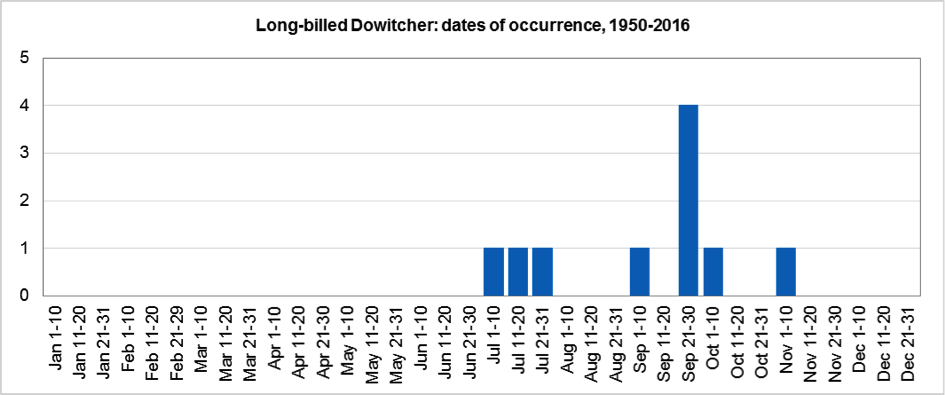
Finder’s report: Long-billed Dowitcher at Bardney Ponds, September 28th, 1971
by K. Atkin and E. J. Mackrill.
Note: account taken from the original BBRC submissions; this was the second county record. This was the only accepted British record in 1971. There were six other records of 'Dowitcher sp.', with one in Angus, Scotland as well as five in Ireland.
Circumstances
The bird was first observed at a distance of 70m. feeding with several Common Snipe (see photo at top of page). It appeared much larger, longer necked, smaller headed and longer billed. It then flew and in flight looked considerably larger than the Common Snipe, broader winged and longer billed; at this range no white was visible in the wing. It emitted a shrill, single note – “chip-chip-chip”. On its return the bird was silent and came in quickly and nervously with a couple of Common Snipe. It stood there with the snipe bobbing its head while they were motionless. A description was made at a range of 10-15 yd.
Description
Body – it appeared to be the size of a Redshank.
Bill – very long with slight droop at tip, about 2.2x head length, all dark, paler at base.
Head – appeared relatively small with a well-pronounced superciliary meeting on forehead in a ‘vee’. Dark cap and with a dark line through the eye. Face orange-buff.
Upperparts – nape and upper mantle mouse brown in dull light, greyer in sunlight, finely streaked darker. Prominent white ‘vee’ from base of tail up to mantle. Dark centres to scapulars and wing coverts with pale buff edges. Open wing showed a whitish trailing edge to secondaries and inner primaries and very noticeable in good light, but otherwise not very distinct.
Underparts – throat and upper breast grey-brown with distinctive pectoral band. Lines of dark spots at sides of breast extending on to flanks where became heavily barred. Underparts creamy-buff appearing more orange/rufous in dull light. White on lower belly and vent. Some spots on ventral region.
Legs – pale greenish-yellow as long as Redshanks; did not project beyond tail in flight.
Tail – upper tail heavily barred extending to base. Barring heaviest at tip of tail. More white than black at base, but more black than white at tip. Tail appeared more uniformly dark at a distance.
Wings – fell short of tail-end in normal closed position.
Call – single of double, shrill ‘chip’ or ‘peet’; also, a quieter rippling ‘pip-pip-pip-pip’ or ‘chip-chip-chip’ likened to Wood Sandpiper (EJM). Single ‘quip’ or ‘kik’, most frequent high pitched and not guttural; also, a double or treble ‘chik’ recalling Wood Sandpiper and rapid, rippling trill prior to flight (KA).
(Account as per new Birds of Lincolnshire (2021), included September 2022)


